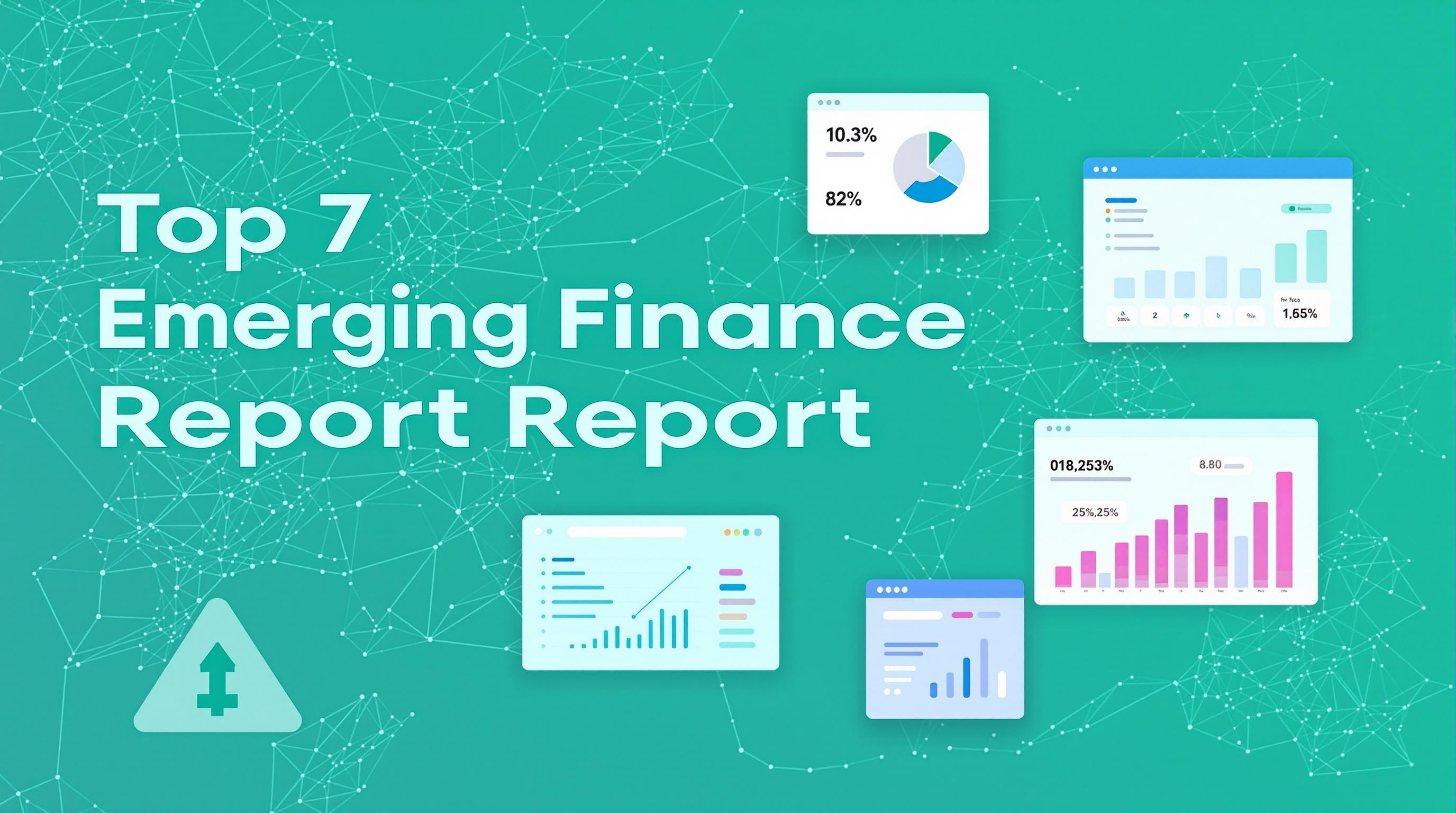Featured Articles
- "Behind the Numbers: How Quantum Computing Could Disrupt Traditional Finance Reporting"
- Beyond the Balance Sheet: The Dark Art of Creative Accounting in Corporate Finance Reports
- Cryptocurrency’s Silent Revolution: How Digital Assets Are Reshaping Traditional Finance Reporting
- Decoding the Dark Side: How Emotional Mismanagement Distorts Corporate Finance Reports
- "Finance Reports in the Age of AI: Uncovering Unintentional Biases and Surprising Impacts on Investment Strategies"
"Finance Reports in the Age of AI: Uncovering Unintentional Biases and Surprising Impacts on Investment Strategies"
"Finance Reports in the Age of AI: Uncovering Unintentional Biases and Surprising Impacts on Investment Strategies"
In today's complex financial landscape, artificial intelligence (AI) is revolutionizing how investment strategies are formed and implemented. However, with great power comes great responsibility, as AI inadvertently weaves biases into finance reports that can lead to surprising investment consequences.
The AI-Driven Financial Landscape
Imagine waking up each day with a new financial assistant powered by AI, sifting through copious amounts of data to reveal trends that once eluded human analysts. The statistical prowess of AI systems is proving invaluable in making predictions and suggesting strategies. For instance, a recent report from McKinsey found that companies utilizing AI can expect a 20% boost in productivity, especially in finance sectors where data accuracy is paramount.
The Allure of Speed: But at What Cost?
With AI processing vast databases in the blink of an eye, one must wonder: is speed leading us down the rabbit hole of unintentional biases? A staggering 87% of finance professionals believe AI enhances their analytical capabilities, yet a notable percentage also admits to lower skepticism toward AI-driven insights (Source: Deloitte Insights). This is where the problem lies—there's a danger of taking these recommendations at face value without critical analysis.
A Humorous Anecdote: The Overzealous AI
Picture this: an AI system so eager to showcase its capabilities that it convinces investors to let go of fundamentally sound stocks in favor of trending companies with no solid grounding. Call it the classic case of “the shiny object syndrome.” Investors can wind up investing in companies worth their weight in memes rather than intrinsic value, only to cringe later when the trend changes!
Sneaky Biases in Our Data
Biases in data aren’t merely a matter of personal preference; they can lead to significant discrepancies in finance reports. Take, for example, the issue of geographic bias. Analysts may unconsciously favor companies in metropolitan areas due to easier access to information, while neglecting potentially lucrative opportunities in rural enterprises. According to a study by the Stanford Graduate School of Business, investments directed toward urban businesses have a tendency to return 15% more than rural investments, despite a similar risk profile. The issue isn't the data but the analysts interpreting them.
The Real Cost of Unintentional Bias
What’s the unseen price tag of such biases? With AI driven by historical data, if that data contains biases, those biases are replicated across every outcome. According to a report by the World Economic Forum, 83% of top investment firms are now openly concerned about unintentional AI biases seeping into their investment decision-making processes. When biases impact fiduciary duties, it can lead to toxic outcomes that spur trust issues and financial losses.
Case Study: An Eerie Parallel
Consider the downfall of XYZ Corp, a company that was once a darling of the stock market based solely on its highly favorable social media sentiment analysis by an AI system. As financial analysts blindly trailed the AI's recommendations, many investors quickly put their money into XYZ Corp stock. Only a few months later, it was revealed that the sentiment data was skewed due to a massive ad campaign, which had paid influencers misrepresenting the true sentiment around the brand. The stock plummeted by 60% within a month, and investors found themselves left holding the bag.
Combating Unintentional Biases
Alleviating bias in AI finance reports requires consciousness and scrutiny at every level. Regular audits of algorithms and the data they rely on can help to flag biases before they flourish. Incorporating a diverse set of data inputs, including those from underrepresented communities and sectors, could also improve the reliability of AI outputs. A Deloitte report highlighted that companies committing to inclusion within their data sets have shown an improvement in their investment outcomes by up to 25%.
Persuading Investors: It’s a Team Sport
Investors must take a proactive role, thinking critically about AI-generated suggestions. Emphasizing collaborative efforts between data scientists and finance experts can create a holistic view. As one financial analyst quipped, “AI doesn’t know how to brew coffee or make toast. It needs someone to check its homework.” Engage with the data rather than solely relying on it.
Moving Beyond Raw Data: Human Intuition Matters
Would you trust a self-driving car that relied only on AI to navigate? Probably not! Just like how a person’s unique life experiences help them make informed decisions, human intuition should guide investment choices alongside AI advisories. As the famous investor Warren Buffett once said, “It’s far better to buy a wonderful company at a fair price than a fair company at a wonderful price."
A Future With AI: Hope or Hype?
Even for financial analysts trained to detect irregularities, the seductive nature of AI can entice a careless mistake. David, an analyst in his late 20s with a penchant for tech, lost a considerable sum when he decided to rely on AI-generated scripts without applying his own scrutiny. “It was as if I was giving my brain a timeout,” he recalls. Unfortunately, this vacation ended with a regretful email to his boss explaining the drastic drop in their investment fund.
Building Trust in AI
The road ahead doesn’t have to be paved with pitfalls. By focusing on transparency, organizations can enhance trust in AI tools. It means informing stakeholders about algorithms' origins and underlying datasets, aiming to create an environment where AI acts as a partner, not a puppeteer—enabling calm and collected investment decisions.
The Importance of Education
Regardless of age, education on the usage and potential pitfalls of AI is crucial for all investors. Generational gaps often make traditional investment strategies clash with new-age technologies. Whether you're a 16-year-old just getting started or a 70-year-old who has been around the block, understanding how AI operates and impacts our financial world is vital. Learning from documentaries, online tutorials, or local investment clubs can empower investors to be well-informed in an AI-driven landscape.
Through the Lens of Innovation
As we plunge deeper into the AI-driven financial revolution, the key lies in maximizing its advantages while being aware of its contradictions. Recognizing the potential for bias and actively working against it is essential for creating fair financial systems. It's a marriage of modern technology and age-old wisdom—together crafting accessible, inclusive, and effective investment strategies that will benefit all.
In Summary
Before you jump headfirst into AI-led investment pools, keep in mind that the waters may be murkier than they seem. Unintentional biases can create waves that throw an investor’s boat off course. When harnessed correctly, however, the power of AI can provide insights previously unimaginable, leading to strategies that not only excel but also celebrate diversity and inclusion. After all, the future of finance isn’t just artificial intelligence—it’s intelligence guided by human hands. The clash of tech and touch holds the keys to a flourish financial future.




